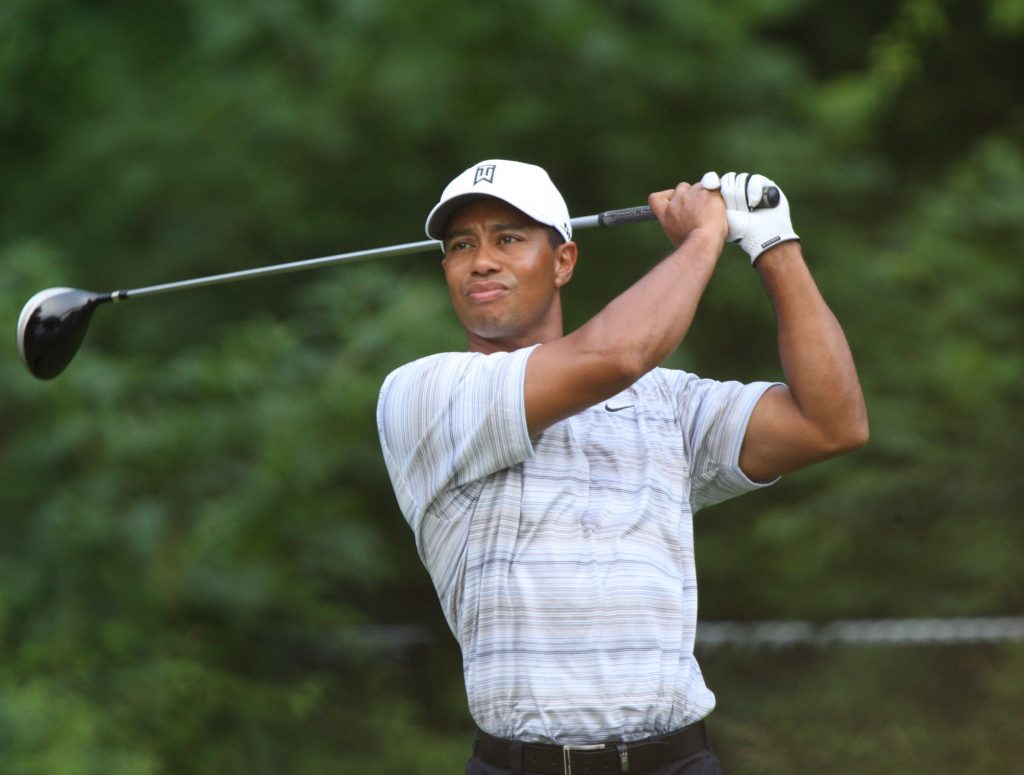
During the worst of his injuries, Tiger Woods was incapable of getting out of bed in the morning without assistance. His four back surgeries and his Achilles and knee operations left him crippled, bedridden and unable to swing a golf club, let alone compete for championships.
This precipitous fall for the athlete who had previously dominated the sport of golf unlike any before left Woods in a dark mental place, fearful for his future.
“There’s really nothing I can look forward to, nothing I can build towards,” Woods said in 2015. “It’s literally just day by day and week by week and time by time. Where is the light at the end of the tunnel? I don’t know.”
The light has finally become clear. Tiger Woods is a champion again after his victory at the Masters Sunday, April 14. His return to the heights of greatness has given the sports world an opportunity to reflect on Woods’ lowest moments and his improbable return to glory.
After spending his 20s and early 30s being compared to the greatest players in the history of golf, Woods’ decade-long inability to contend in tournaments left the sport looking to fill the void. Players like Justin Rose, Dustin Johnson and Jordan Spieth took advantage of Woods’ absence and secured their major championships, but nobody dominated the sport like
vintage Tiger.

By age 21, Woods had won his first major championship, winning the 1997 Masters by 12 strokes. He was the youngest ever to win that event, and his margin of victory is still a tournament record. Two months later, Woods was No. 1 in the world rankings, and he secured his Grand Slam, winning all four major tournaments by the year 2000. Eleven years after his first major, Woods won his 14th, winning the U.S. Open in 2008.
That unprecedented start to a career teased Tiger’s potential and set the stage for his calamitous collapse. Plagued by the scandalous exposure of his private life and betrayed by his back and knees, Tiger was unable to win a major after 2008 and won his last tour event in 2013.
Analysts and commentators daydreamed of Tiger’s potential had he stayed healthy through his prime and questioned if his physical ailments would allow him to ever swing a club again. The question was hotly debated: could he come back? By 2017, the consensus was practically unanimous – Tiger was finished.
This week, Tiger answered that question himself, silencing doubters and proving he is far from finished. Woods donned his green jacket again Sunday as a 15-time major champion and five-time Masters winner. By smashing drives from the tee, pinning the ball within feet of the pins with his irons and delivering clutch putts in the biggest moments, Woods put together his best four-day performance at a major in over a decade and completed the greatest comeback in the history of sports.
The 43-year-old Woods is not the player who will dominate all competition. He will never win another tournament by 12 strokes and is unlikely to win four majors in a row, as he did in 2000-2001. But Woods is again among the elite in the sport, capable of winning any tournament and showing flashes of the player who exhibited the precision and passion that inspired hundreds of kids to mirror his game.
Almost two decades into his professional career, Woods’ contemporaries on the course are players who willingly admit they took up golf because they watched Tiger as young aspiring players. Tony Finau, Ricky Fowler, Jordan Spieth and Brooks Koepka are among the current stars who idolized Woods long before they ever dreamed of sharing a clubhouse with him.
Nike, the premier athletic brand for star golfers, including Woods, has introduced the slogan, “It’s only crazy until you do it.” In late 2017, Tiger was ranked 1,199th in the world. When the next rankings come out, he will be sixth. Completing that comeback is crazy. Tiger did it.
For the foreseeable future, Woods will continue to improve, continue to contend and continue to win. Breaking Jack Nicholas’ record of 18 major championships is possible again. Retaking the No. 1 ranking in the world is possible again.
The red shirt and black hat on Sundays are back. The impossible shots he makes look so effortless are back. The fist pumps and roars from the crowd are back.
Tiger is back.
